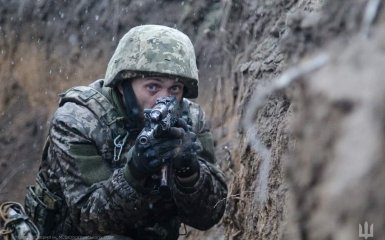According to Yuriy Fedorenko, the "Achilles" commander of the battalion of the attack systems of the "Achilles" UAV of the 92nd separate assault brigade, units of the occupying army of the Russian Federation continue active assaults on the positions of the Armed Forces of Ukraine in the Chasiv Yar region of Donetsk region.
What is known about the situation in the area of Chasiv Yar
This is one of the following points, which is fundamentally important for them, the enemy will try to fulfill this task until May 9, because there is a clear task of the helmsman of the Russian Federation, dictator Putin. Accordingly, Russian troops continue to concentrate troops in order to continue to press Chasiv Yar. Also, additional pressure is put on the flanks, it is Bohdanivka, Ivanivske, in order to take Chasiv Yar in a pinch, Fedorenko emphasized.
According to him, even with a shortage of artillery shells, the Ukrainian military continues to inflict numerous losses in personnel and military equipment on the Russian occupiers.
During the execution of shock-assault actions, the enemy loses on the battlefield from 40% to 70% of the equipment that participated in these assault actions. Despite this, they introduce reserves, Fedorenko explains.
He also revealed why the Russian invaders tried to seize Chasiv Yar immediately.
It is critical for the enemy to have tactical success. This is connected, in particular, with political processes — soon the inauguration of the dictator Putin. And, besides, on May 9, Putin must appeal to the population and justify the insane resources that are being spent on this war. Although, in fact, wherever the foot of the occupier is, it is destroyed land, Fedorenko explains.
What is known about the numerous losses of the Russian army at the front
According to the BBC, the criminal military of the Russian Federation at the front in Ukraine continues to resort to the tactics of so-called "meat" assaults and to bet on superiority in numbers.
In particular, prisoners who are sent from Russia to fight against Ukraine die within a few months.
Journalists of the publication note that at least 50,000 dead Russian soldiers in Ukraine are known by name, even though the actual losses are much higher.
The losses of the occupying army of the Russian Federation are increasing rapidly during the next offensive.
This was the case in the spring of 2023 during the battle for Bakhmut and from October 2023 to the spring of 2024, when the Russians captured Avdiivka.
Journalists analysed graves in 70 cemeteries across Russia.
For example, satellite images of the Bogorod cemetery in Ryazan show that a whole new place has appeared for the burial of fallen soldiers.
Recruited prisoners play a significant role in the tactics of "meat" assaults at the front. The Russian occupiers themselves anonymously admit that they do not spare the "prisoners" at the front.
We are talking about the so-called "Storm-Z" assault groups.
Journalists managed to confirm the death by the name of 9,000 Russian prisoners who were sent to the front line.
According to the BBC, during the "Wagner Group", former prisoners survived an average of three months at the front.
Those who were later recruited by the Ministry of Defense of the Russian Federation lived an average of only two months.
Some "convicts" were killed on the front lines in the first two weeks after they signed off on the contract.




